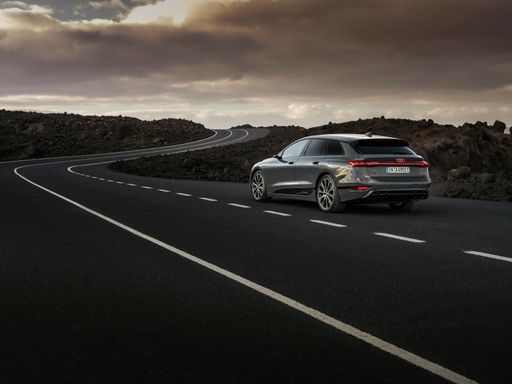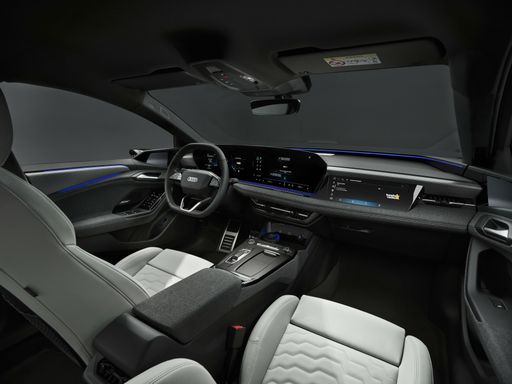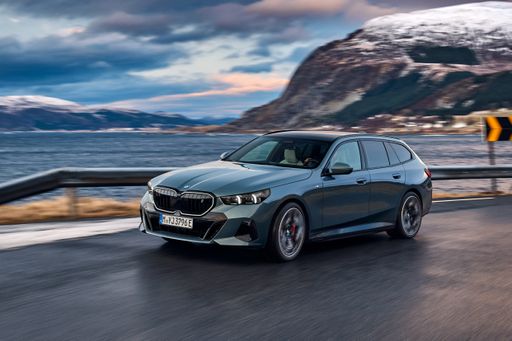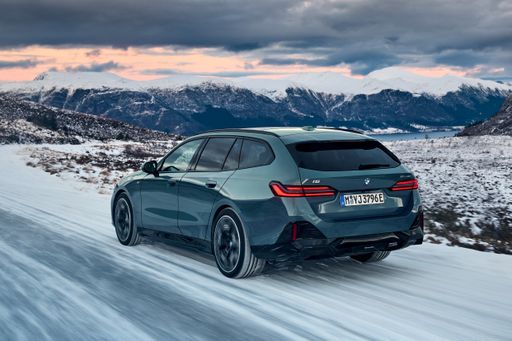Audi A6 e-tron Avant vs BMW i5 Touring - Differences and prices compared
Costs and Efficiency:
Looking at overall running costs, both models reveal some interesting differences in everyday economy.
Audi A6 e-tron Avant has a slightly advantage in terms of price – it starts at 55200 £, while the BMW i5 Touring costs 61900 £. That’s a price difference of around 6643 £.
In terms of energy consumption, the advantage goes to the Audi A6 e-tron Avant: with 14.80 kWh per 100 km, it’s minimal more efficient than the BMW i5 Touring with 15.40 kWh. That’s a difference of about 0.60 kWh.
As for range, the Audi A6 e-tron Avant performs somewhat better – achieving up to 716 km, about 114 km more than the BMW i5 Touring.
Engine and Performance:
Power, torque and acceleration say a lot about how a car feels on the road. This is where you see which model delivers more driving dynamics.
When it comes to engine power, the BMW i5 Touring has a minimal edge – offering 601 HP compared to 551 HP. That’s roughly 50 HP more horsepower.
In acceleration from 0 to 100 km/h, the is quicker – completing the sprint in , while the takes . That’s about faster.
In terms of top speed, the Audi A6 e-tron Avant performs slight better – reaching 240 km/h, while the BMW i5 Touring tops out at 230 km/h. The difference is around 10 km/h.
There’s also a difference in torque: Audi A6 e-tron Avant pulls barely noticeable stronger with 855 Nm compared to 820 Nm. That’s about 35 Nm difference.
Space and Everyday Use:
Beyond pure performance, interior space and usability matter most in daily life. This is where you see which car is more practical and versatile.
Seats: offers more seating capacity – vs .
In curb weight, Audi A6 e-tron Avant is hardly perceptible lighter – 2185 kg compared to 2255 kg. The difference is around 70 kg.
In terms of boot space, the BMW i5 Touring offers somewhat more room – 570 L compared to 502 L. That’s a difference of about 68 L.
In maximum load capacity, the BMW i5 Touring performs a bit better – up to 1700 L, which is about 278 L more than the Audi A6 e-tron Avant.
When it comes to payload, BMW i5 Touring to a small extent takes the win – 560 kg compared to 500 kg. That’s a difference of about 60 kg.
Who wins the race?
The Audi A6 e-tron Avant proves to be only a minor advantage and therefore becomes our DriveDuel Champion!
Audi A6 e-tron Avant is the better all-rounder in this comparison.
 @ Audi AG
@ Audi AG
Audi A6 e-tron Avant
Costs and Consumption
View detailed analysis
Engine and Performance
View detailed analysis
Dimensions and Body
View detailed analysis
Audi A6 e-tron Avant
The Audi A6 e-tron Avant wraps Audi's trademark refinement into a sleek electric estate that looks at home in the city or on the open road. Inside it's grown-up and tech-forward with practical packaging for family life, delivering a composed, confident drive that makes everyday hauling feel a bit more special and slightly futuristic.
details @ Audi AG
@ Audi AG
 @ Audi AG
@ Audi AG
 @ Audi AG
@ Audi AG
BMW i5 Touring
The BMW i5 Touring marries the everyday usefulness of a roomy estate with the hushed, premium feel of a modern electric BMW. It’s an appealing choice for buyers who want confident, relaxed driving and executive poise without sacrificing weekend practicality — and it even makes loading skis feel slightly glamorous.
details @ BMW Group Press
@ BMW Group Press
 @ BMW Group Press
@ BMW Group Press
 @ Audi AG
@ Audi AG
|
 @ BMW Group Press
@ BMW Group Press
|
|
|
|
Costs and Consumption |
|
|---|---|
|
Price
55200 - 100100 £
|
Price
61900 - 87000 £
|
|
Consumption L/100km
-
|
Consumption L/100km
-
|
|
Consumption kWh/100km
14.8 - 17 kWh
|
Consumption kWh/100km
15.4 - 17.7 kWh
|
|
Electric Range
539 - 716 km
|
Electric Range
522 - 602 km
|
|
Battery Capacity
75.8 - 94.9 kWh
|
Battery Capacity
81.20 kWh
|
|
co2
0 g/km
|
co2
0 g/km
|
|
Fuel tank capacity
-
|
Fuel tank capacity
-
|
Dimensions and Body |
|
|---|---|
|
Body Type
Estate
|
Body Type
Estate
|
|
Seats
5
|
Seats
5
|
|
Doors
5
|
Doors
4
|
|
Curb weight
2185 - 2410 kg
|
Curb weight
2255 - 2425 kg
|
|
Trunk capacity
502 L
|
Trunk capacity
570 L
|
|
Length
4928 mm
|
Length
5060 mm
|
|
Width
1923 mm
|
Width
1900 mm
|
|
Height
1504 - 1527 mm
|
Height
1505 - 1515 mm
|
|
Max trunk capacity
1422 L
|
Max trunk capacity
1700 L
|
|
Payload
470 - 500 kg
|
Payload
535 - 560 kg
|
Engine and Performance |
|
|---|---|
|
Engine Type
Electric
|
Engine Type
Electric
|
|
Transmission
Automatic
|
Transmission
Automatic
|
|
Transmission Detail
Reduction Gearbox
|
Transmission Detail
Reduction Gearbox
|
|
Drive Type
Rear-Wheel Drive, All-Wheel Drive
|
Drive Type
All-Wheel Drive, Rear-Wheel Drive
|
|
Power HP
326 - 551 HP
|
Power HP
340 - 601 HP
|
|
Acceleration 0-100km/h
3.9 - 6 s
|
Acceleration 0-100km/h
3.9 - 6.1 s
|
|
Max Speed
210 - 240 km/h
|
Max Speed
193 - 230 km/h
|
|
Torque
435 - 855 Nm
|
Torque
430 - 820 Nm
|
|
Number of Cylinders
-
|
Number of Cylinders
-
|
|
Power kW
240 - 405 kW
|
Power kW
250 - 442 kW
|
|
Engine capacity
-
|
Engine capacity
-
|
General |
|
|---|---|
|
Model Year
2024
|
Model Year
2024
|
|
CO2 Efficiency Class
A
|
CO2 Efficiency Class
A
|
|
Brand
Audi
|
Brand
BMW
|
What drivetrain options does the Audi A6 e-tron Avant have?
The Audi A6 e-tron Avant is available as Rear-Wheel Drive or All-Wheel Drive.
The prices and data displayed are estimates based on German list prices and may vary by country. This information is not legally binding.
